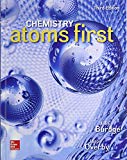
(a)
Interpretation:
The similar chemical behaviors of chlorine, bromine, iodine and differences in between fluorine and other halogens have to be given.
Concept introduction:
Halogens: A group of non-metallic elements which are showing similar chemical properties in the periodic table (group 17).
To show: The reaction of chlorine, bromine and iodine with hydrogen
(b)
Interpretation:
The similar chemical behaviors of chlorine, bromine, iodine and differences in between fluorine and other halogens have to be given.
Concept introduction:
Halogens: A group of non-metallic elements which are showing similar chemical properties in the periodic table (group 17).
To show: The formation of silver salts from chlorine, bromine and iodine
(c)
Interpretation:
The similar chemical behaviors of chlorine, bromine, iodine and differences in between fluorine and other halogens have to be given.
Concept introduction:
Halogens: A group of non-metallic elements which are showing similar chemical properties in the periodic table (group 17).
To show: The oxidizing character of chlorine, bromine and iodine
(d)
Interpretation:
The similar chemical behaviors of chlorine, bromine, iodine and differences in between fluorine and other halogens have to be given.
Concept introduction:
Halogens: A group of non-metallic elements which are showing similar chemical properties in the periodic table (group 17).
To show: The reaction of chlorine, bromine and iodine with sodium hydroxide
(e)
Interpretation:
The similar chemical behaviors of chlorine, bromine, iodine and differences in between fluorine and other halogens have to be given.
Concept introduction:
Halogens: A group of non-metallic elements which are showing similar chemical properties in the periodic table (group 17).
To give: The differences between fluorine and other halogens
Want to see the full answer?
Check out a sample textbook solution
Chapter 25 Solutions
GEN COMBO CHEMISTRY: ATOMS FIRST; ALEKS 360 2S ACCESS CARD CHEMISTRY:ATOMS FIRST
- For each of the substituted benzene molecules below, determine the inductive and resonance effects the substituent will have on the benzene ring, as well as the overall electron-density of the ring compared to unsubstituted benzene. Molecule Inductive Effects O donating O withdrawing O no inductive effects Resonance Effects Overall Electron-Density ○ donating ○ withdrawing O no resonance effects O electron-rich O electron-deficient O similar to benzene Cl O donating O withdrawing ○ donating ○ withdrawing O no inductive effects O no resonance effects O Explanation Check O electron-rich O electron-deficient similar to benzene X © 2025 McGraw Hill LLC. All Rights Reserved. Terms of Use | Privacy Center | Accessarrow_forwardIdentifying electron-donating and For each of the substituted benzene molecules below, determine the inductive and resonance effects the substituent will have on the benzene ring, as well as the overall electron-density of the ring compared to unsubstituted benzene. Molecule Inductive Effects NH2 ○ donating NO2 Explanation Check withdrawing no inductive effects Resonance Effects Overall Electron-Density ○ donating O withdrawing O no resonance effects O donating O withdrawing O donating withdrawing O no inductive effects Ono resonance effects O electron-rich electron-deficient O similar to benzene O electron-rich O electron-deficient O similar to benzene olo 18 Ar 2025 McGraw Hill LLC. All Rights Reserved. Terms of Use | Privacy Center | Accessibilityarrow_forwardRank each of the following substituted benzene molecules in order of which will react fastest (1) to slowest (4) by electrophilic aromatic substitution. Explanation Check Х (Choose one) OH (Choose one) OCH3 (Choose one) OH (Choose one) © 2025 McGraw Hill LLC. All Rights Reserved. Terms of Use | Privacy Centerarrow_forward
- Assign R or S to all the chiral centers in each compound drawn below porat bg 9 Br Brarrow_forwarddescrive the energy levels of an atom and howan electron moces between themarrow_forwardRank each set of substituents using the Cahn-Ingold-Perlog sequence rules (priority) by numbering the highest priority substituent 1.arrow_forward
 Chemistry: Principles and PracticeChemistryISBN:9780534420123Author:Daniel L. Reger, Scott R. Goode, David W. Ball, Edward MercerPublisher:Cengage Learning
Chemistry: Principles and PracticeChemistryISBN:9780534420123Author:Daniel L. Reger, Scott R. Goode, David W. Ball, Edward MercerPublisher:Cengage Learning Chemistry by OpenStax (2015-05-04)ChemistryISBN:9781938168390Author:Klaus Theopold, Richard H Langley, Paul Flowers, William R. Robinson, Mark BlaserPublisher:OpenStax
Chemistry by OpenStax (2015-05-04)ChemistryISBN:9781938168390Author:Klaus Theopold, Richard H Langley, Paul Flowers, William R. Robinson, Mark BlaserPublisher:OpenStax

